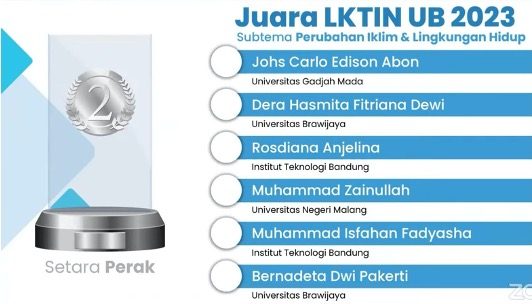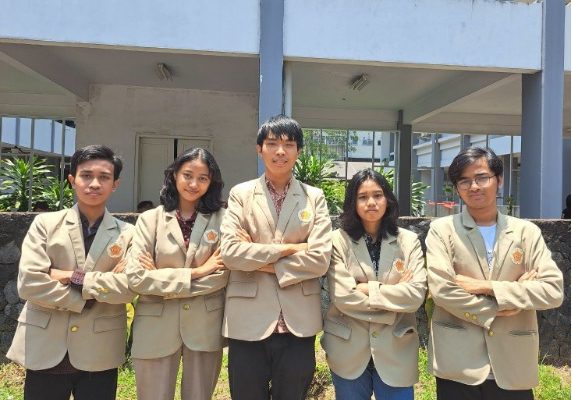The students from the Faculty of Biology UGM made another achievement by winning a silver medal in the 2023 National Scientific Paper Competition at Brawijaya University. The team was guided by Dr. Wiko Arif Wibowo, S.Si., Led by Johs Carlo Edison Abon (Biology 2022) along with Adi Citra Prima Pranata (Biology 2022), Agnetta Danastri Dardjito (Biology 2022), Chandra Rifana Arifin (Biology 2022), and Muhammad Fathin Setya Daffa (Biology 2022). The event was held from June 1 to September 13, 2023, with the theme “Collaborative Nation-Building with Applied Technology Innovations towards Independent Indonesia.”
The team took the sub-theme “Climate Change and Environmental Conservation” with the title “Implementation of Bioluminescent Trembesi Trees (Albizia saman (Jacq.) Merr) as Illumination and Pollution Bioaccumulator in Urban Environments in Indonesia.” This scientific paper was motivated by the issues of air and light pollution in urban areas of Indonesia. Air pollution stems from increased mobility, leading to higher motor vehicle usage. In 2019 alone, 232,974 deaths in Indonesia were attributed to air pollution. Furthermore, urban streets necessitate even illumination, resulting in light pollution and increased demand for fossil energy.
The proposed solution in this scientific paper involved genetically engineering trembesi trees (Albizia saman (Jacq.) Merr) to become bioluminescent, capable of emitting light without requiring electricity. This was achieved by inserting a gene cluster producing the luciferin-luciferase enzyme complex, specifically Luz, HispS, H3H, and CPH, into the trembesi tree through DNA cloning and injection via the stomata of its leaves. This gene cluster was obtained from the bioluminescent fungus Neonothopanus nambi, which naturally emits light and is found in Indonesia, specifically in West Sumatra. In essence, the process that produces light in N. nambi, as described earlier, was transferred to the trembesi tree through genetic engineering.
Behind the choice of the trembesi tree lies an ecological rationale. Trembesi trees have the ability to effectively and efficiently absorb heavy metal pollutants and carbon. Annually, one trembesi tree can absorb 28.5 tons of CO2. Therefore, it is anticipated that bioluminescent trembesi trees can address the issues of light and air pollution on urban streets. Additionally, the planting of bioluminescent trembesi trees will enhance the aesthetic value of urban areas in Indonesia.



